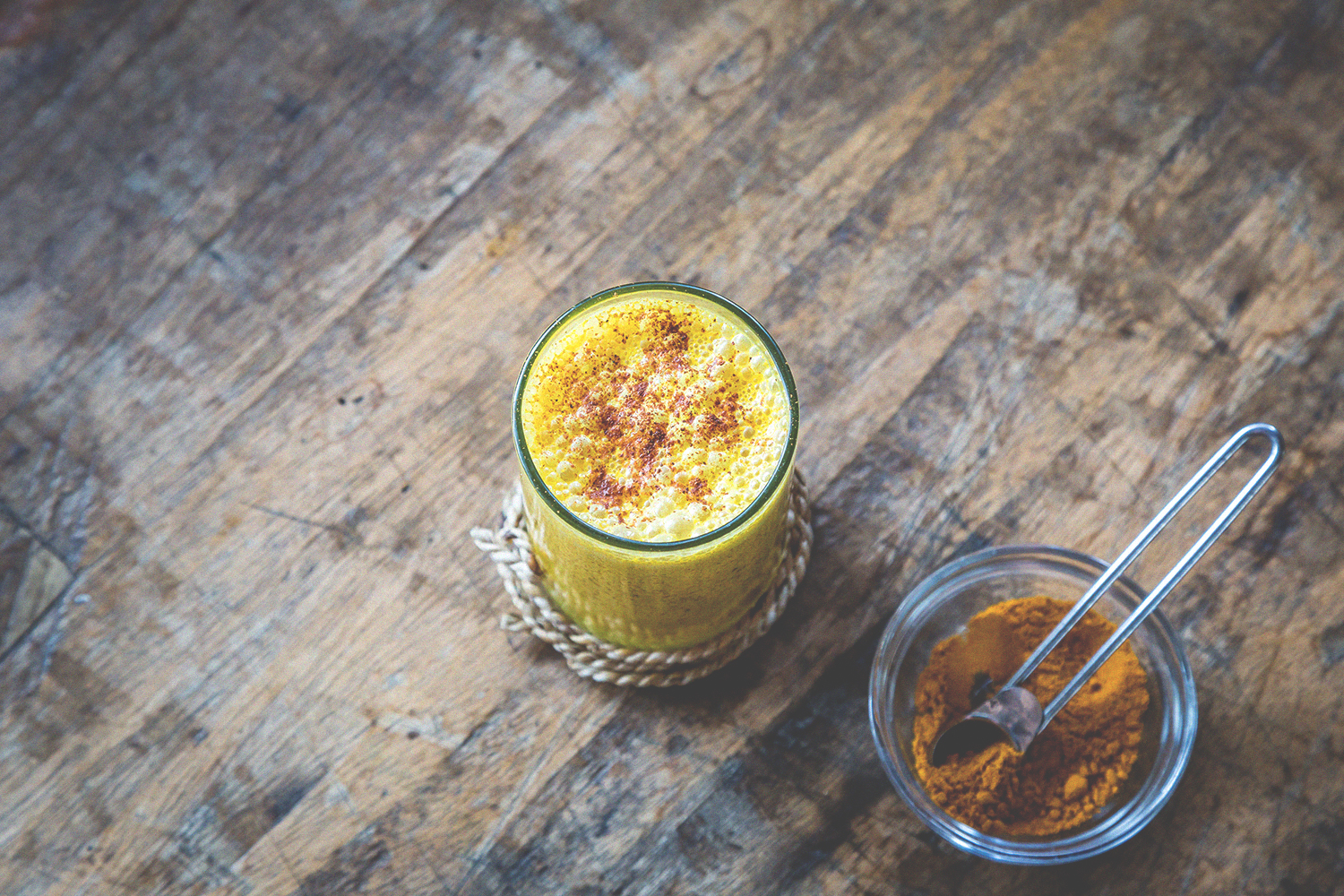With its vibrant yellow color and potent medicinal properties, turmeric has become one of the most talked-about superfoods. Let’s learn more about its humble roots as a traditional Indian spice and its growing list of health benefits.
BY: JESSICA PATEL, RDN, LDN
From lattes to curries, turmeric is making a name for itself in today’s culinary creations. But turmeric has a rich history rooted in the Vedic culture in India dating back nearly 4,000 years! Its use has both religious and culinary significance in India. Known for its stunning yellow color, turmeric is referred to as “Indian Saffron.”
Turmeric is a knobby root belonging to the ginger family with peppery, spicy, and pungent notes. The root can be found in two forms: fresh or dried (as the spice). The fresh root (peeled) or powdered spice can be easily added to a smoothie for nutritional boost. Other ways to cook with turmeric include adding it to a soup or stew for a flavorful, rich broth.
In Indian cooking, turmeric is typically paired with other spices. Turmeric pairs well with other traditional Indian spices like ground ginger, chili, and mustard seeds, giving the cuisine its complex flavors.
So what makes turmeric ‘super’?
2 teaspoons of turmeric provides you with 17% daily value of manganese and 10% daily value of iron. As one of its most active ingredients, curcumin gives turmeric its yellow pigment and is widely studied for its anti-inflammatory and antioxidant properties.
The beneficial properties in turmeric (like curcumin) are likely best absorbed by the body when the spice is consumed as an addition to a meal. For example, black pepper helps to enhance the body’s absorption of curcumin by 2000%.
Let’s take a look at a few more reasons why this spice is such a powerhouse:
Fights Chronic Disease
Numerous studies demonstrate that curcumin is a potent antimicrobial. It can play an active role against various diseases including diabetes, obesity, heart disease and autoimmune diseases.
Better Joints
Compounds in turmeric with anti-inflammatory properties, such as curcumin, may be beneficial for alleviating symptoms related to joint arthritis.
Quicker Exercise Recovery
Curcumin supplementation may support Exercise Induced Muscle Damage (EIMD) by decreasing inflammation produced during exercise.
Diabetes Prevention
Curcumin’s antioxidant potential has been demonstrated as a possible way to offset inflammatory responses linked to the development of Type II diabetes.
Alleviating Symptoms of Depression
Curcumin may play a role in elevating mood as demonstrated in a recent study. Differing doses of curcumin, as well as a combination of curcumin and saffron, effectively reduced depression symptoms in people with major depressive disorder.
HEADER IMAGE: OSHA KEY
Jessica Patel, RDN, LDN is a Chicago-based private practice dietitian who helps others connect with good food through simple, healthful cooking techniques. With a love for wholesome, natural food, Jessica uses a holistic-minded approach to nutrition to help her clients stay healthy through the healing power of nourishing foods. Visit her at Well Fed Nutrition.

